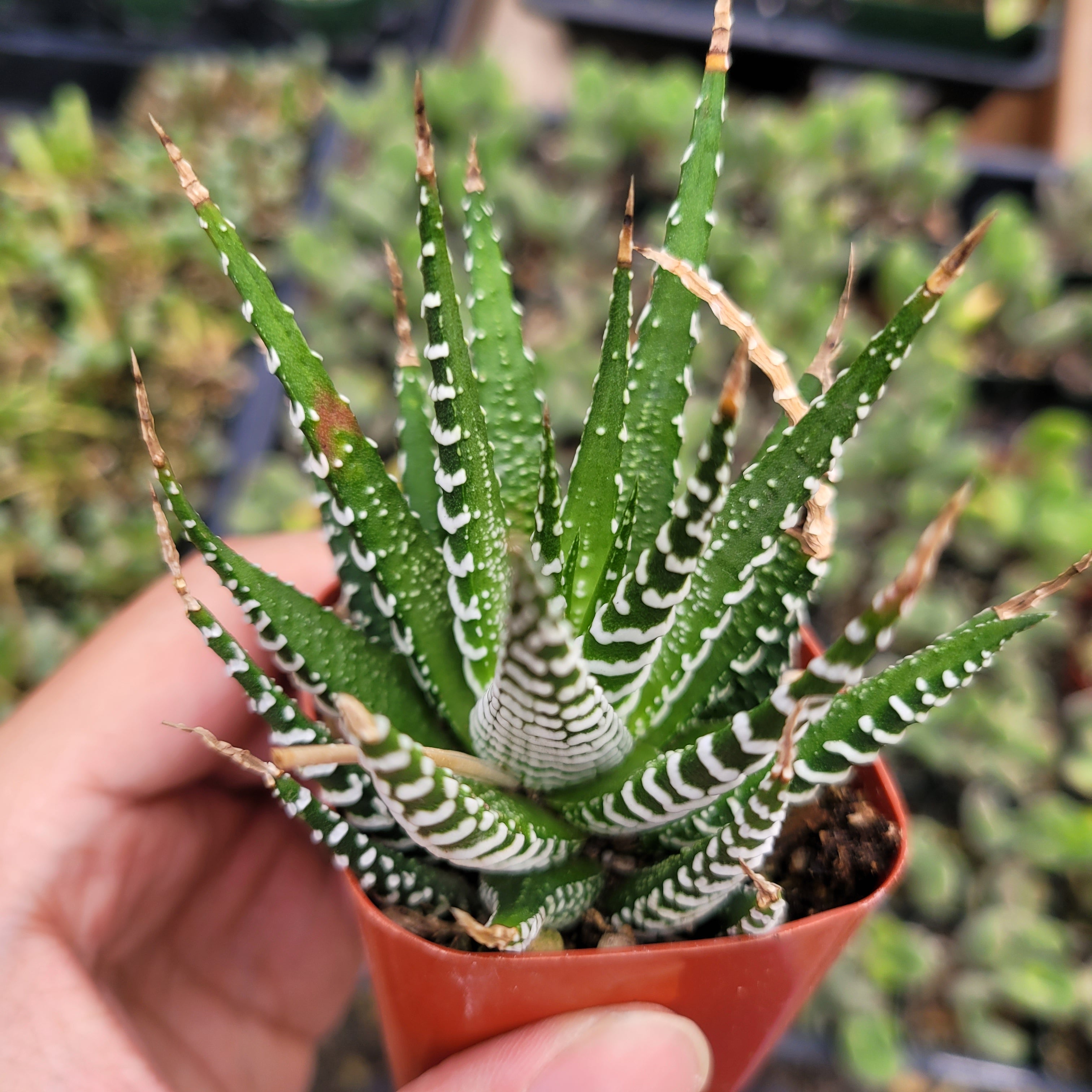
These offsets can be left to develop into a dense clump or pulled off and transplanted. Haworthia are slow growers and tend to stay small in pots, but they will produce new offsets in clumps around their bases. This means that, unlike other succulents, it is important not to over-water or fertilize during summer dormancy and water a bit more frequently in the winter growing season. This genus tolerates high heat by slowing down and eventually going dormant in the peak of summer. Water deeply enough for water to run out the drainage hole and allow the soil to completely dry before watering again. Pick deep containers with drainage holes and a gritty, well-draining soil that is 50% to 70% mineral grit (coarse sand, pumice, or perlite). Strong, drought-tolerant roots will grow if they have great drainage and infrequent water. They are particularly easy to grow and rarely affected by common succulent pests and diseases. Haworthia are able to tolerate low, indoor light, making them excellent houseplants, even for beginners. Its common named is derived from the horizontal Zebra looking. Its ability to tolerate low light makes it a fantastic indoor succulent. The Zebra haworthia is also named Zebra cactus, although its a succulent and not Cacti. In nature, it grows in the shrublands of South Africa with acidic soil and partial shade or filtered light. Please contact the store to speak with one of our experts if you are interested in further details concerning recommendations on pot size, watering, pruning, repotting, etc.Zebra Plant (now named Haworthiopsis fasciata) (Rowley): Named for the distinctive white bumps that line the outside of its leaves. Watering Haworthiopsis fasciata Zebra Plant has typical watering needs for a succulent. It also propagates easily, which makes it perfect for arrangements or gifts. Its perfect for beginners, because it grows well indoors when taken care of properly.

Use the information described here as a guideline only individual performance can and will vary. Haworthiopsis fasciata Zebra Plant is a common household succulent. There are many factors that will affect the ultimate height, spread and overall performance of a plant when grown indoors among them, the size of the pot it's growing in, the amount of light it receives, watering frequency, the pruning regimen and repotting schedule. It is not particular as to soil type or pH an average potting soil should work just fine. Be aware that your particular watering schedule may vary depending on its location in the room, the pot size, plant size and other conditions if in doubt, ask one of our experts in the store for advice. This plant should be watered when the surface of the soil gets dry, and will need watering approximately once each week. It prefers dry to average moisture levels with very well-drained soil, and may die if left in standing water for any length of time. This houseplant will do well in a location that gets either direct or indirect sunlight, although it will usually require a more brightly-lit environment than what artificial indoor lighting alone can provide.

It grows at a slow rate, and under ideal conditions can be expected to live for approximately 10 years.

If you see soft roots that are easy to break, there is rot. For sure, you need to remove the soil and look at the roots.

This means that you’ve likely also had root rot. When grown indoors, Zebra Plant can be expected to grow to be only 6 inches tall at maturity extending to 12 inches tall with the flowers, with a spread of 4 inches. It’s very likely that you’ve been over-watering your Zebra succulent and that it has mushy brown leaves altogether.


 0 kommentar(er)
0 kommentar(er)
